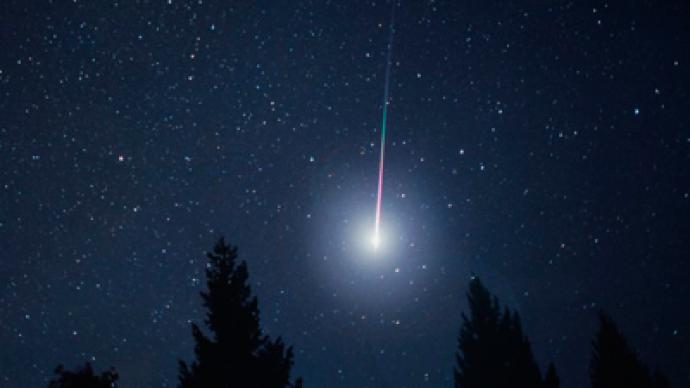Wishing on a falling…satellite?

In the coming years our planet is facing the prospect of “satellite rain”. After the fall of the decommissioned US weather satellite UARS that reached the Earth September 23, scientists’ attention is turned to another object heading our way.
The Röntgen x-ray satellite (ROSAT) is due to reach our planet sometime in November. As was the case with UARS, no-one can predict when or where exactly the remains of the space junk that was not burned in the atmosphere will land. According to the German Aerospace Center (DLR) it is not possible to predict the precise time of re-entry or the exact location.Only a few hours before the predicted re-entry time, it may be possible to specify the area on the Earth’s surface where re-entry is probably going to occur. If fragments do reach the surface of the planet, they will spread out and come down along this area across a swathe up to 80 kilometers wide.
ROSAT, the Röntgen satellite, was an x-ray observatory developed through a co-operative program between Germany, the US and UK. The satellite was proposed by the Max-Planck-Institut für Extraterrestrische Physik (MPE) and designed, built and operated in Germany. It was launched by the United States on June 1, 1990. The mission ended after almost nine years, on February 12, 1999.
Since its launch on 1 June 1990, friction due to the Earth's upper atmosphere has been causing the x-ray satellite ROSAT to lose altitude continuously.What worries people most is the likelihood of getting injured as a result of the re-entry or space debris falling onto one’s backyard. According to DLR, due to the estimated total surface area over which damage might be caused by the fragments that – only theoretically – might survive re-entry, the orbital path of the satellite and the distribution of human populations on Earth, it is possible to calculate that the probability of someone somewhere on Earth getting injured is about 1 in 2,000. This prediction basically means that one person to be injured for every 2000 de-orbit events of this kind.Futuristic movies notwithstanding, the technology for capturing satellites and bringing them back home under controlled conditions is still at the development stage. Feasibility of this kind of operation has yet to be proved, and even if and when this technology becomes available, only a few objects might be selected for controlled re-entry.Earthlings have a lot more satellite re-entries to look forward to in the coming years. Over the last few years, the total mass of this “space trash” re-entering our atmosphere has amounted to about 60 to 80 tonnes per year. Luckily for us fragments of debris have been found on the ground only in very rare cases.So the good old wishing upon a falling star may transform into wishing upon a falling satellite. But who cares what to wish upon, if it brings you luck and does not fall on your head, right?
Elena Ostroumova, RT














